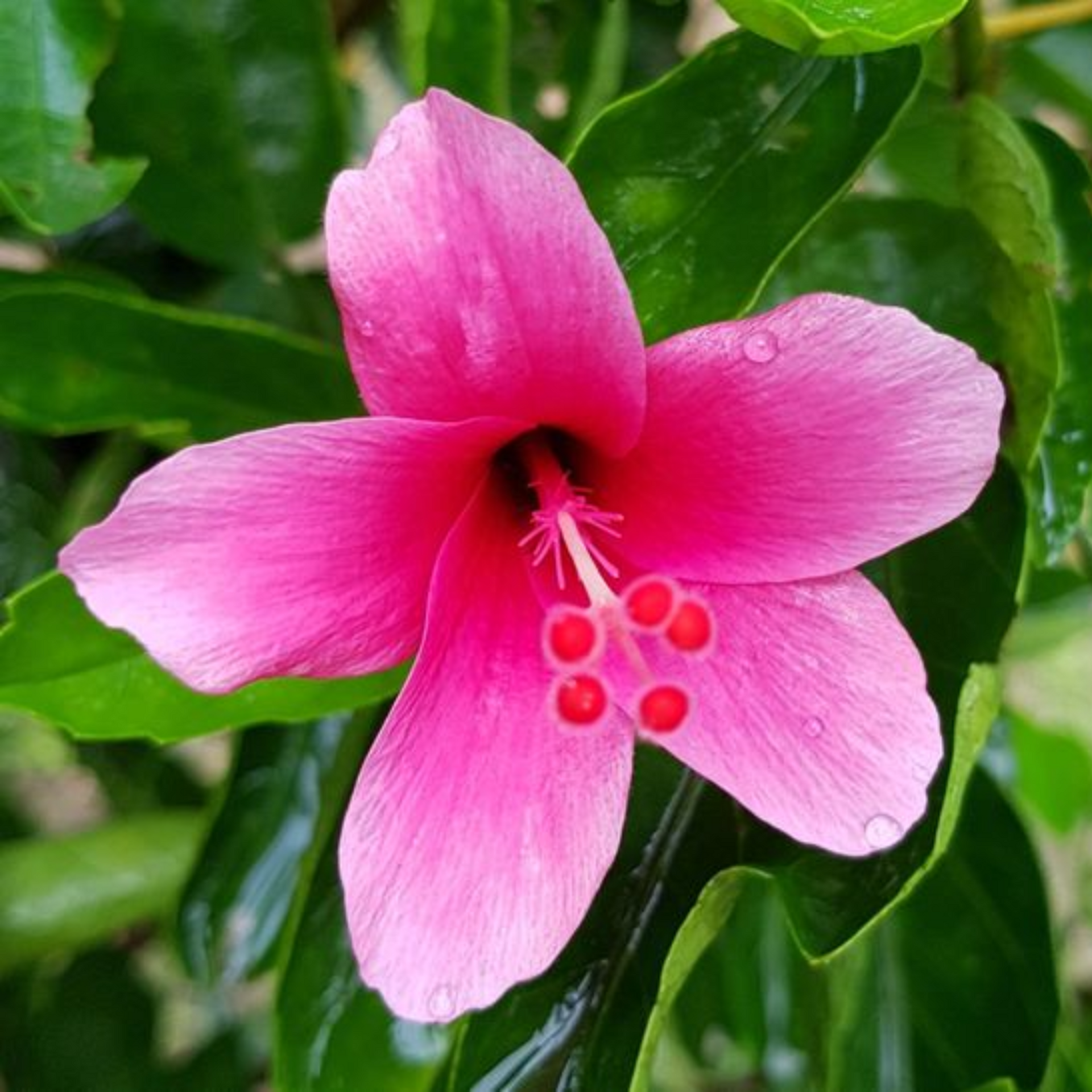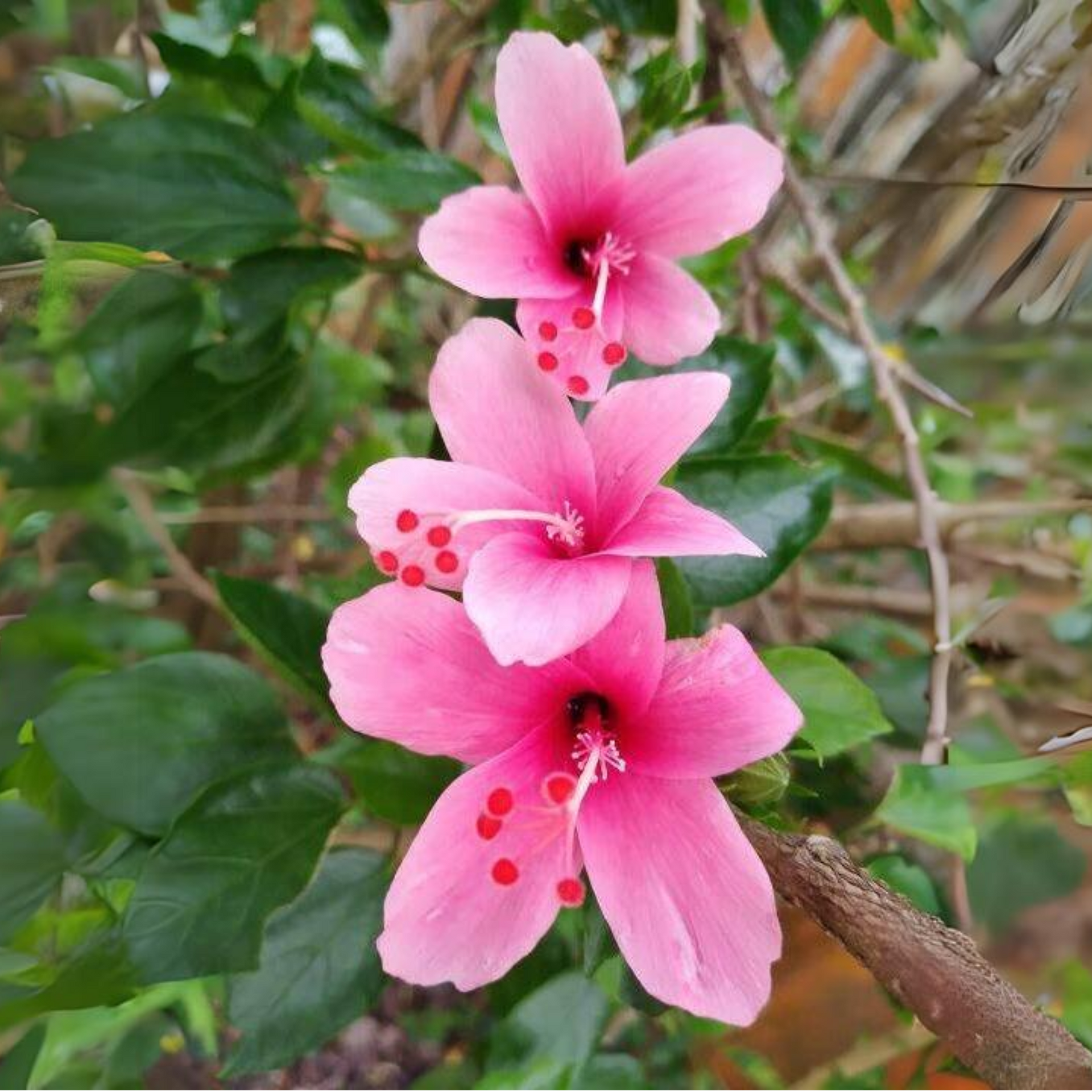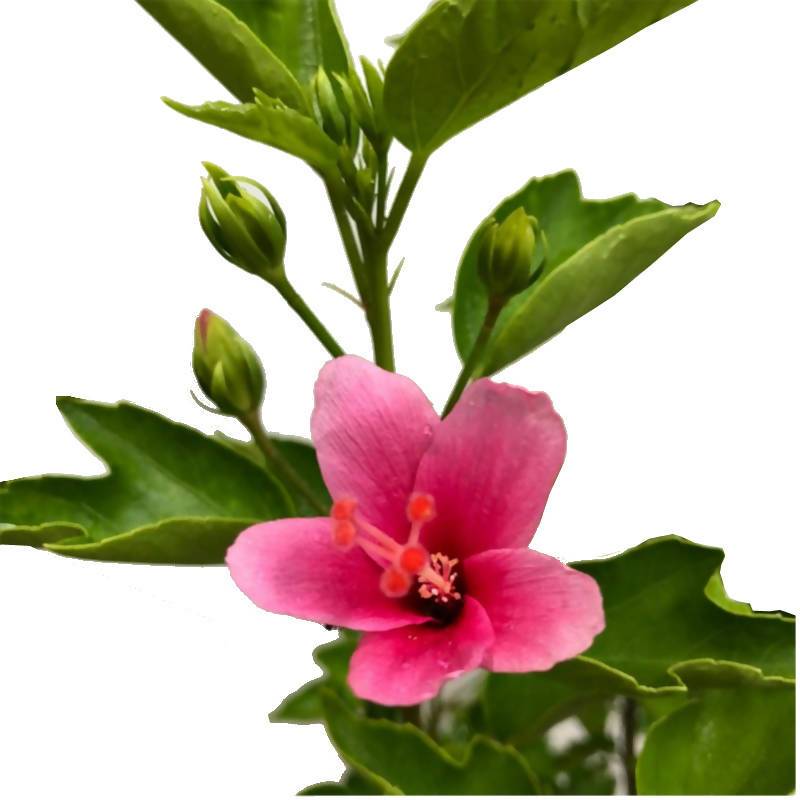


Unveiling the Beauty of Mini Pink
Hibiscus Plants
When it comes to adding a touch of natural elegance to your surroundings, few plants can rival the charm of the Mini Pink Hibiscus. These petite botanical wonders are a delightful addition to any garden or indoor space, bringing with them not only their stunning beauty but also a rich history and cultural significance. In this article, we'll delve into the captivating world of Mini Pink Hibiscus plants, exploring their characteristics, care requirements, and the symbolism they hold.
A Closer Look at Mini Pink Hibiscus Plants
Appearance
- The Mini Pink Hibiscus, scientifically known as Hibiscus rosa-sinensis, is a compact and dwarf variety of the more extensive Hibiscus family.
- Unlike its larger counterparts, Mini Pink Hibiscus plants typically reach a height of 18 to 24 inches, making them ideal for small gardens, balconies, and indoor spaces.
- What sets them apart, of course, is their mesmerizing pink flowers.
- These blooms come in various shades of pink, from soft pastels to vibrant fuchsias.
- Each flower features delicate, five-petaled blossoms that create a captivating contrast against their lush green foliage.
Origin
- Hibiscus rosa-sinensis, including its miniature pink variety, is native to warm, tropical regions such as Asia and the Pacific Islands.
- In many of these areas, Hibiscus is not only cherished for its aesthetics but is also deeply woven into local cultures and traditions.
Caring for Mini Pink Hibiscus Plants
A. Sunlight
- Mini Pink Hibiscus plants are sun-loving beauties.
- They thrive in bright, indirect sunlight and require at least 4 to 6 hours of sun exposure each day.
- Placing them near a south or west-facing window is often an excellent choice for indoor cultivation.
Soil and Watering
- These plants prefer well-draining, slightly acidic soil.
- A good potting mix designed for flowering plants is suitable.
- Water them on a regular basis to maintain the soil equally moist but not waterlogged.
- Allow at least one inch of soil to dry between waterings.
Temperature and Humidity
- Mini Pink Hibiscus plants are sensitive to cold temperatures and should be kept in a warm environment.
- They thrive in temperatures between 60°F to 90°F (15°C to 32°C).
- Adequate humidity is also crucial.
- Misting the plant or using a humidity tray can help to enhance humidity.
Pruning and Fertilizing
- Regular pruning helps maintain the plant's compact shape and encourages prolific flowering.
- Prune back leggy or dead branches as needed.
- Fertilize your Mini Pink Hibiscus with a balanced, water-soluble fertilizer during the growing season (spring and summer) to promote healthy growth and blooming.
Symbolism and Cultural Significance
Throughout history, the Hibiscus flower, including the Mini Pink variety, has held various meanings and cultural significance:
Beauty and Delicacy:
- In many cultures, the Hibiscus symbolizes beauty, femininity, and delicate charm.
- Its graceful appearance and soft pink hues make it a perfect representation of these qualities.
Love and Passion:
- The Hibiscus is often associated with matters of the heart, representing love, passion, and romantic attraction.
- In some cultures, giving a Hibiscus bloom to someone carries a message of affection.
Hospitality:
- In Hawaii, the Hibiscus is considered a symbol of hospitality.
- Guests are often greeted with a fresh Hibiscus flower lei, a gesture that signifies warmth and welcome.
Fertility and Womanhood:
- In certain cultures, the Hibiscus is linked to fertility and womanhood.
- It is used in various rituals and ceremonies to celebrate femininity and the cycle of life.
- Mini Pink Hibiscus plants are not just ornamental additions to your living spaces; they are also carriers of rich symbolism and cultural history.
- Their petite size, vibrant pink blooms, and relatively easy care requirements make them a popular choice for both novice and experienced gardeners.
- Whether you seek to enhance your garden's aesthetics or infuse your home with natural beauty, the Mini Pink Hibiscus is a delightful choice that brings with it centuries of cultural significance and timeless allure.
Growing Mini Pink Hibiscus: A Guide to Blooming
Beauty
Hibiscus, with its stunning array of colors and striking trumpet-shaped blooms, is a beloved addition to gardens worldwide. Among the many hibiscus varieties, the mini pink hibiscus stands out for its delicate charm and compact size. If you're looking to add a touch of elegance and color to your garden, this guide will help you cultivate and care for these exquisite plants.
Choosing the Right Mini Pink Hibiscus:
Selecting the Variety:
Mini pink hibiscus comes in several varieties, each with its unique shades of pink. Look for a variety that suits your aesthetic preferences and climate conditions. Popular choices include the 'Pink Petite,' 'Mini Pink,' and 'Baby Pink' hibiscus.
Sunlight Requirements:
Hibiscus plants are sun-lovers. Insure your chosen spot receives at least 6- 8 hours of direct sun daily.
Climate Considerations:
Mini pink hibiscus thrives in USDA hardiness zones 9 to 11. Consider growing them in containers that can be moved indoors during the winter if you live in a colder climate.
Planting Your Mini Pink Hibiscus:
Soil Preparation:
These plants prefer well-draining soil with a slightly acidic to neutral pH. Amending your garden soil with organic matter can improve drainage and fertility.
Planting Depth:
Plant your mini pink hibiscus at the same depth it was in its nursery container. This usually means the top of the root ball should be level with the soil surface.
Spacing:
Space your hibiscus plants at least 3 to 6 feet apart to allow for proper air circulation and prevent overcrowding.
Caring for Mini Pink Hibiscus:
Watering:
Hibiscus plants prefer consistently moist soil, so water them deeply and regularly, especially during dry spells. Avoid waterlogged conditions, as hibiscus roots are susceptible to rot.
Fertilization:
Feed your mini pink hibiscus with a balanced, slow-release fertilizer during the growing season (spring through early fall). Follow the package instructions for operation rates.
Pruning:
Prune your hibiscus in the early spring before new growth begins. Remove any dead or leggy branches and shape the plant to your desired form. Pruning on a regular basis promotes bushier growth and more profuse blooms.
Pest and Disease Control:
Keep an eye out for common hibiscus pests like aphids and spider mites. Insecticide cleaning or neem oil painting should be used immediately to treat any infestations. Ensure adequate air circulation to aid fungal conditions.
Overwintering Mini Pink Hibiscus:
In colder climates, you'll need to protect your mini pink hibiscus during the winter months.
Here's how:
Bring Indoors:
Before the first frost, carefully dig up your hibiscus if it's planted in the ground and transfer it to a suitable-sized container. Place it in a bright, cool indoor location, ideally with temperatures around 50°F (10°C).
Reduce Watering:
During the winter, hibiscus enters a period of dormancy, so reduce watering. Keep the soil barely moist.
Prune and Inspect:
Trim your hibiscus to remove any dead or unhealthy growth and inspect it for pests or diseases. Address any issues before returning it outdoors in the spring.




